Is College Worth the Price and Debt? Private student loans make up $150 billion of the $1 trillion in outstanding student debt. Private student loans grow hand and hand with for-profit institution growth.
- 1 Comment
Few will ever argue that getting an education is a worthy goal. College is seen as the gateway to a better life and mobility into the middle class. The middle class has been shrinking while the cost of attending college has skyrocketed. The cost to attend college has far outstripped any sensible economic measure and has climbed even faster than housing values during the peak days of the bubble. Is college worth the current cost? Many articles come out showing that college graduates earn more than non-college graduates. Yet this data rarely digs deep into the figures. What colleges did these graduates go to since the US now has over 4,000 institutions? How old are these graduates? These figures look at lifetime earnings so we are looking at a time when the US had a more vibrant economy and going to college was affordable. Let us examine if college is worth the current price.
Total Student Debt
Student debt is the fastest growing segment of debt in our economy. Student debt has surpassed the $1 trillion mark and continues to grow. What is also problematic is how much of this debt is tied to onerous private student loans:
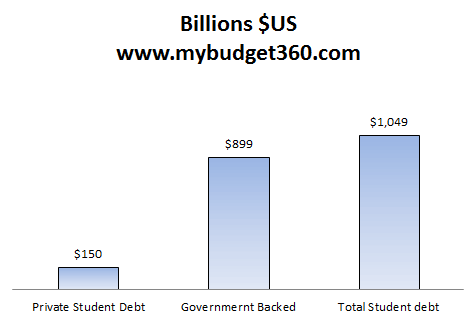
$150 billion of the outstanding student debt is attached to the private market. This debt does not have the minimal protection of federal student loans. Keep in mind many find themselves in deep financial issues with federal loans. A recent report found incredible amounts of complaints regarding these loans:
“(NY Times) The report found that many loan servicers — the companies that collect the payments for the lenders — make it extremely difficult for student borrowers to manage their debts. Borrowers often have difficulty finding out how much they owe or getting information about their payment histories. Some struggling borrowers who need loan modification said that servicers forced them to pay more per month than they could possibly afford, without telling them the payments would not prevent default.â€
That is one aspect of the problem. What the report does not focus on is how many of these loans are made to students going to for-profit institutions.
For-profits
For-profit institutions in the late 1990s made up about 3 percent of total college enrollment. Now they make up roughly 10 percent of all students:
These schools also eat up an inordinate amount of federal aid as the chart above highlights with very little results. Many are largely designed to suck in as much federal aid money while yielding a negligible educational benefit to students. They also push many into the private loan market.
Remember that figure of $150 billion in private student loans? A large portion of this growth can be attributed to the growth of the for-profit education industry:
At a public school, about 5 percent of graduating students take on private student loans. Compare this to 42 percent at for-profits. This would not be such an issue aside from the fact that many of these schools have horrific track records when it comes to placing students in the careers they studied for. They have an extremely powerful lobby and make it very difficult to gather these figures. In fact, until a year ago it was extremely difficult to get the figures on outstanding student debt. How can it be that an industry fully subsidized by the government does not know that banks and educational lenders have made out some $1 trillion in student loans? Of course they knew and it was in the government and banks interest to keep this figure hidden from view. Now the problem is out of hand and we are likely facing another bubble.
Young Wage Earners
The loss of the middle class has crushed the earnings of those only with a high school degree:
Earnings for male high school graduates has fallen nearly 25 percent from the 1970s. The same has occurred for female high school graduates. There are fewer blue collar jobs that can provide a living wage. The squeeze on working class Americans is intense and that is why we find nearly 47 million Americans now on food assistance. With these kinds of figures, it is understandable why some will go to any college for the chance of making it out of poverty.
At least going to college, whether paying $20,000 a year at a for-profit or $50,000 for a private institution, many feel they will get something in return. If they try a go at the market with no college degree the figures are already dismal. So it is important that people make wise choices. In fact, many will do a much better job by simply going to a local community college than a for-profit. Yet community colleges being crushed by local state budgets never had an effective advertising wing to get out to the public.
Many of the institutions that run marketing campaigns especially in the for-profit arena are largely places to be avoided. For-profits have horrific default rates and have very little tangible results in the real world.
Net Worth for Young
Are young Americans poorer than they were two decades ago? One strong measure of financial health is looking at net worth figures:
Americans under the age of 35 today are much poorer than their counterparts of the 1980s. Many are also in deeper debt. We have one of the most educated in terms of college educational attainment generations yet in terms of salary and net worth, they are performing poorly. Is college worth the cost? That totally depends on where you go and what you are paying. It is very clear that most of the for-profits are simply debt traps. There are many schools in the 4,000 and more that exist that largely provide a weak educational experience for the investment put in. Signaling is one of the reasons many go to schools with a reputation. But how much is that signal worth? In many cases it depends on what industry you go into. Nearly half of recent college graduates (those under 25) are working in industries that don’t require their college degree or are un/underemployed. Does that sound like a winning slogan for “college is worth it at any price?â€
If you enjoyed this post click here to subscribe to a complete feed and stay up to date with today’s challenging market!1 Comments on this post
Trackbacks
-
ARIZONA said:
THE schools are so screwed up, the system can’t be fixed,there’s going to be an enormous FAMINE in america,the schools have trained the kids to be braindead morons and not challenge the system,the result will be a total loss of america,to foreign governments controling everything,namely the BRITISH QUEEN,and no one will realize it till its way to late,BUT ALL THE BELLS are RINGING right now…………..and there saying :DANGER,DANGER,is anyone listening………………
November 25th, 2012 at 11:18 am
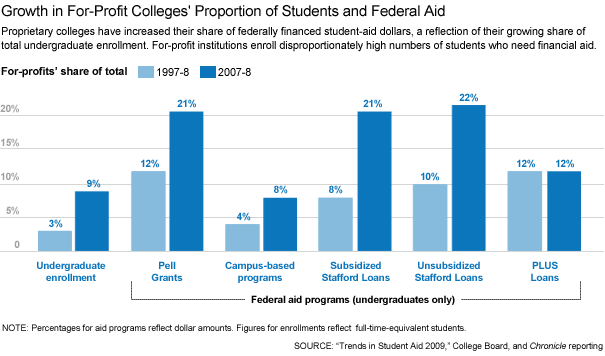
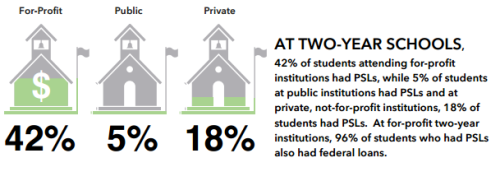
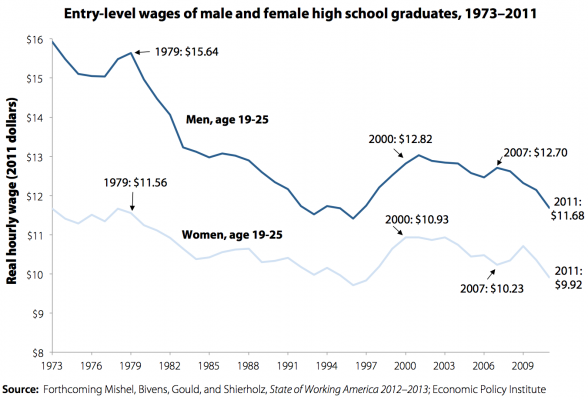
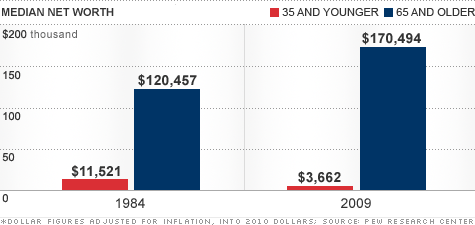
 If you enjoyed this post click here to subscribe to a complete feed and stay up to date with today’s challenging market!
If you enjoyed this post click here to subscribe to a complete feed and stay up to date with today’s challenging market!